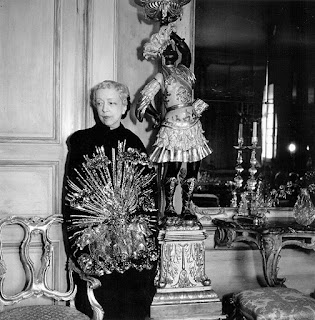We
consider the style and aplomb of legendary interior designer, Elsie De Wolfe
Elsie de
Wolfe has been credited as America’s first interior designer. She brought
celebrity and wit to an otherwise unknown profession, and her designs represent
a seductive and obsolete style of whimsical murals, trompe-l'œil wallpaper and
frivolity. In her 1913 book, The House in Good Taste, she wrote, “I’m going to
make everything around me beautiful – that will be my life.”
Wolfe
originally trained as an actress, but received more notoriety for her onstage
wardrobe than for her performances. It was not until she was in her forties
that she took to decorating houses, a career that would not only make her name
but transform the landscape of the traditional American home. She first
redesigned her own quarters, the Villa Trianon in the Versailles district of
Paris, followed by The Colony Club in New York, a female member's club that
would cement her reputation. She abolished strict Victorian hauteur and
reinvigorated tired buildings with light, open spaces and soft, comfortable
upholstery. “I opened the doors and windows of America, and let the air and
sunshine in,” she later said. Her charisma and charm was evident in her
designs, inspired by a French aesthetic, introducing Parisian art and
entertainment to American high society, along with a delicate touch of
femininity in a male-dominated industry. She took ambitious projects on both
sides of the Atlantic, during a decade where it took eight days, rather than
eight hours, to travel from New York to France.
Wolfe
dressed herself with the same free-spirit and rebellion that she approached
interiors. In 1926, shortly after marrying diplomat Charles Mendl, she shocked
high society by arriving at a fancy dress ball as a Moulin Rouge dancer,
performing headsprings as she entered the room. Her marriage to Mendl was one
more of convenience than love — she could live tax-free as a diplomat’s wife —
and she was known in close circles to be more intimate with women than men. She
lived apart from her husband and was open in her close personal relationship
with Elizabeth Marbury, a pioneering theatre agent whose clients included
George Bernard Shaw and Oscar Wilde. She was described in 1937 by friend
Valentine Lawford as, "This tough old woman with the figure of a girl and
the opaque eyes of a La Tour pastel.”


No comments:
Post a Comment